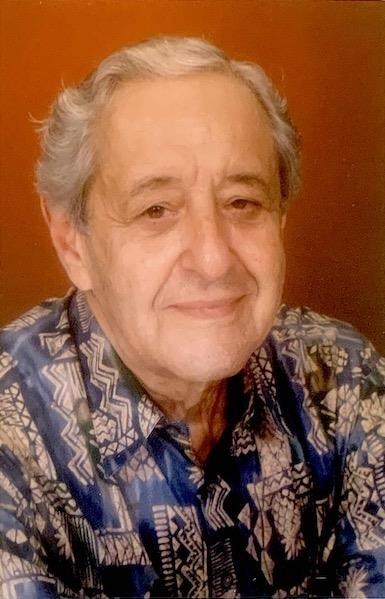
Mortimer Mishkin
It is with great sadness, but profound gratitude for a career of outstanding accomplishments, that we note the passing of renowned neuroscientist Mortimer Mishkin on October 2, 2021. Mishkin’s work has led to a greater understanding of memory, perceptual function, and the functional anatomy of cognition. Mishkin spent over 60 years at the National Institute of Mental Health, where he served as Chief of the Laboratory of Neuropsychology and where he, along with colleagues and protégés, made some of the most important and seminal discoveries in the history of our field. Unlike his predecessors, who tended to focus on the localized function of specific brain regions, Mishkin’s discoveries enabled a broader understanding of distributed neural circuits involved in various cognitive processes. He can truly be regarded as a forerunner of network neuroscience, though his work was tightly grounded in the lesion approach. A distinctive feature of his work is its high degree of clinical relevance and the degree to which his discoveries have had impact all along the science-practice continuum.
Mishkin obtained a Bachelor’s degree in Business Management from Dartmouth College in 1947. After serving in the Navy in Japan, he enrolled at McGill University and obtained his Ph.D. in 1951. He began his work at NIMH in 1955, retiring in 2016 at age 90, but returning the next year as a scientist emeritus. He is the recipient of numerous awards and honors, including the National Medal of Science, awarded in 2010 by President Barack Obama. He was inducted into the National Academy of Sciences in 1984 and the National Academy of Medicine in 1990.
The publication of Scoville & Milner’s (1957) famous description of Patient H.M. stimulated decades of basic science and clinical research on the anatomic basis and clinical characteristics of the human amnesic syndrome. Mishkin’s lab went to work on understanding the necessary and sufficient components of anatomic damage needed to produce amnesia, and in 1978, published the first articulated animal model of amnesia using the delayed nonmatching-to-sample paradigm (Mishkin, M. [1978]. Memory in monkeys severely impaired by combined but not by separate removal of the amygdala and hippocampus. Nature, 273, 297-298.) Mishkin argued that damage to two medial temporal lobe circuits, one involving the hippocampus, the other involving the amygdala, was a necessary prerequisite of profound amnesia, and decades of subsequent work on this “two-circuit” theory has provided an integrated view of memory disorders resulting from damage to temporal lobe, diencephalon, and basal forebrain.
Four years later, Mishkin (with Leslie Ungerleider) introduced the critical concept of “two cortical visual pathways” based on their lesion work with macaque monkeys (Ungerleider, L.G. & Mishkin, M. [1982]. Two cortical visual systems. In D.J. Ingle, M.A. Goodale, and R.J.W. Mansfield (Eds.) Analysis of Visual Behavior, pp. 549-586. Cambridge, MA: MIT Press.). This work, cited thousands of times, revealed functional and anatomic separation between a ventral (occipitotemporal) visual circuit important for object recognition, and a dorsal (occipitoparietal) visual circuit important for spatial and action-oriented cognition. This seminal contribution has motivated literally hundreds of clinical and cognitive neuropsychology investigations that used the two-pathway concept in understanding diverse neuropsychological syndromes, including visual agnosia, optic ataxia, apraxia, and spatial disorientation.
A third critical contribution followed shortly thereafter in which Mishkin and colleagues provided a clinic-anatomical explanation of spared skill learning in amnesia by suggesting that episodic memory depended on connections between the cortex and the temporal lobe, while skill/habit learning depended on cortical interactions with the striatum/basal ganglia (Mishkin, M., Malamut, B., & Bachevalier, J. [1984]. Memories and habits: two neural systems. In G. Lynch, J.L. McGaugh, & N.M. Weinberger (Eds.), Neurobiology of Human Learning and Memory, pp. 65-77. New York: Guilford Press). This framework has been expanded to appreciate that skill/habit learning is a subset of nondeclarative memory, which also includes perceptual learning, habituation/sensitization, and other behavioral phenomena, each of which has a distinct but overlapping neuroanatomic substrate.
In addition to his scientific contributions, Mishkin trained and mentored some of the outstanding neuroscientists of our time, including Leslie Ungerleider, Elisabeth Murray, John Aggleton, Charles Butter, and Robert Desimone. In a 2011 interview for the Dartmouth Alumni Magazine, Mishkin reflected on the process of scientific discovery in neuropsychology: “Studying the brain is both horribly and wonderfully complicated. It’s so frustrating it takes such a long time to figure out even a few of the thousands of circuits, but every discovery is a fantastic high.”
The field of neuropsychology owes a profound debt of gratitude to Dr. Mishkin, a neuroscience giant who produced so many exhilarating discoveries and scientific “highs” throughout his career.
— Russell Bauer
